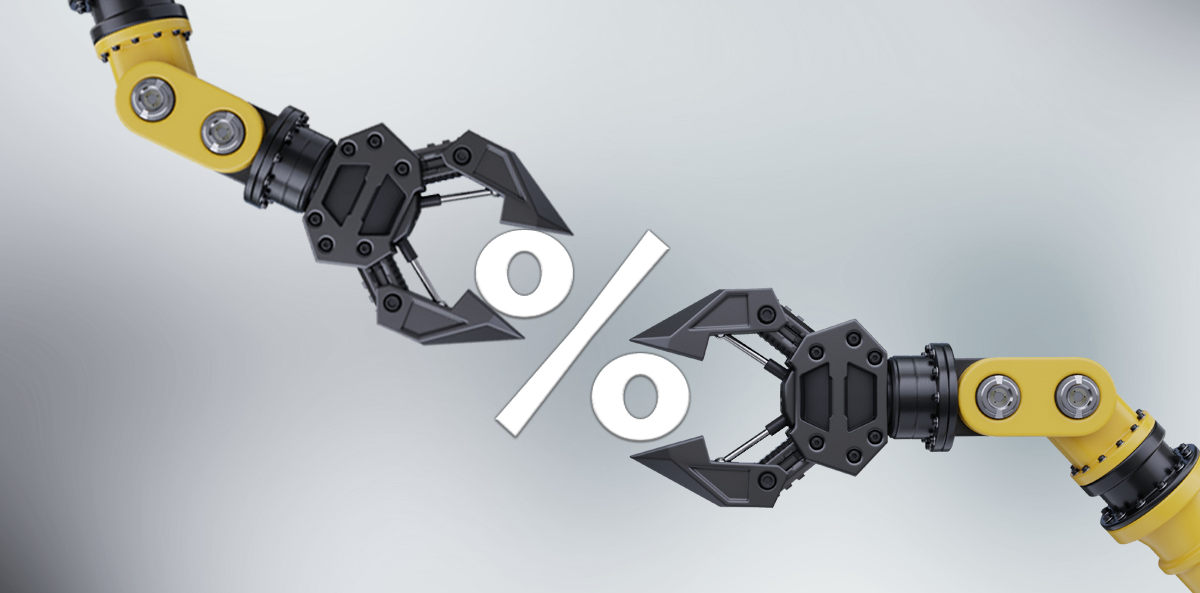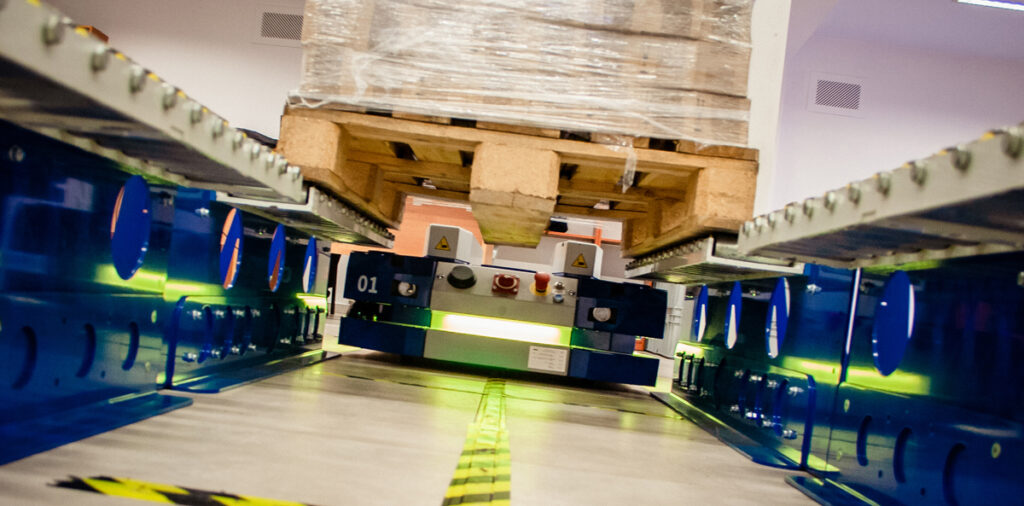
Mobile robots – will robotization tax relief lead to more of them?
AGVs and AMRs are the systems which are becoming increasingly popular in the context of material handling automation. The investment costs incurred on such solutions are expected to pay off on a few levels. From improving people’s safety, to process efficiency, to financial benefits. So, what improvements can we expect in return? When is the investment in mobile robots most profitable? And what will we gain thanks to the robotization tax relief?
The authors of the latest Humanites Institute research report “Barriers and trends. Technological transformation of companies in Poland” remind about the significance of digital transformation. As they emphasize, digital transformation provides a possibility to develop a company and build a technological and competitive advantage. At the same time, it is a tool for making changes, and not an objective. Therefore, automation and robotization of production processes is an essential step on the road to Industry 4.0. The research available on the market suggests that the automation level of Polish companies is still insufficient. An impulse is needed that will convince companies to invest in innovative technologies. One of them may be the robotization tax relief provided in the so-called “Polish Deal.” Will it be enough of an incentive for companies to decide to implement innovative solutions in this area?
Who can benefit from the robotization tax relief?
As we read on the website of the Polish Automation and Robotics Forum (FAiRP), an association of employers that brings together companies in the automation and robotics industry, the robotization tax relief (the so-called robotic relief) may be used by companies, PIT and CIT taxpayers, taxed according to a flat-rate tax or scale that will incur deductible costs in relation to an investment in robotization. Thereby the tax relief will not compensate for the purchase costs, so it is not an investment tax relief, but it is of tax relief nature, i.e., it allows for a reduction in the tax base in a given fiscal year. This is confirmed by the provisions of the Act of 29 October 2021, in Art. 38eb, section 76, point 1 (pp. 85-86), however, they can be deducted under certain conditions – from the tax base and not from income. Pursuant to Article 38eb. point 1. of the cited Act, “a taxpayer who obtains revenues other than revenues from capital gains may deduct from the tax base, calculated in accordance with Article 18, an amount equal to 50% of the tax-deductible costs incurred in the fiscal year on robotization, provided that the amount of the deduction does not exceed the amount of the income obtained by the taxpayer in the fiscal year from revenues other than revenues from capital gains.”
The objective of the robotization tax relief is to help companies improve worker safety, increase innovativeness, productivity, and competitiveness on the domestic and international market, and to generate savings. This step may also become a trigger for entrepreneurs to invest in other, effective, and long-term development project.
Improving worker safety
According to Statistics Poland, in 2020 in manufacturing, nearly 8 per 1,000 employees had accidents, and in transport and storage almost 6 per 1,000. What is more, as much as 60.8% of the accidents were caused by the employee’s improper behavior. Human errors cannot be eliminated unless we eliminate human involvement in certain activities, e.g., activities related to material handling. This can be achieved with, among other things, mobile robots.

As Olaf Dudek, Manager of Mobile Robotics Research and Development at Etisoft Smart Solutions, emphasizes, “Implementation of mobile robots makes sense not only where employees work with hazardous or heavy objects and are exposed to occupational accidents, but also where the working environment is simply difficult for humans. Some AMRs can operate even at -20°C. Therefore, instead of jeopardizing employee’s safety and risking having to pay compensation for the damage to their health, it is worth investing in modern automated solutions.
Increased production efficiency
In the operation of warehouse or production plants there are many activities that do not bring much value but need to be performed. Locating, picking, and moving goods are some of them. If the specificity of company’s activity requires these activities to be performed on large quantities of materials or goods, with robots it can be done faster and with lower risk of costly errors. That is why AGV and AMR systems go mainly to larger plants.
The increased production efficiency is also possible thanks to the fact that mobile robots, contrary to people, do not experience days of lowered efficiency, do not need sick leaves or a break after the shift. What is more, they can be charged instantly, which maximally shortens their downtime.
Savings
The implementation of AGV and AMR systems is also recommended to companies in which many people are needed to operate material handling processes. This eliminates the need to incur fixed costs on remuneration as well as on the equipment itself which is used for this type of tasks, such as for example forklift trucks. In the long-term perspective this generates considerable savings. There is every indication that they will be even greater. As an example, specialists from Etisoft Smart Solution are developing the system of automation battery exchange within the framework of the EU project HEPIS. This would reduce the operating costs of AGVs and AMRs.
“The costs incurred on AGV and AMR systems can usually pay for themselves within 2 to 5 years after implementation. We also provide our customers with the possibility of cooperation in the subscription model. Thanks to that, smaller companies that do not want to incur a large one-off expense also can decide to automate their material handling processes. In such case, the return on investment may appear already in the first month after the implementation,” Olaf Dudek from Etisoft Smart Solutions emphasizes.
The robotization tax relief has been in force since 1 January 2022 and is provided for another 5 years.
Are you considering an investment in robotization? Do you want to increase your company’s production potential? We will provide you with advice!